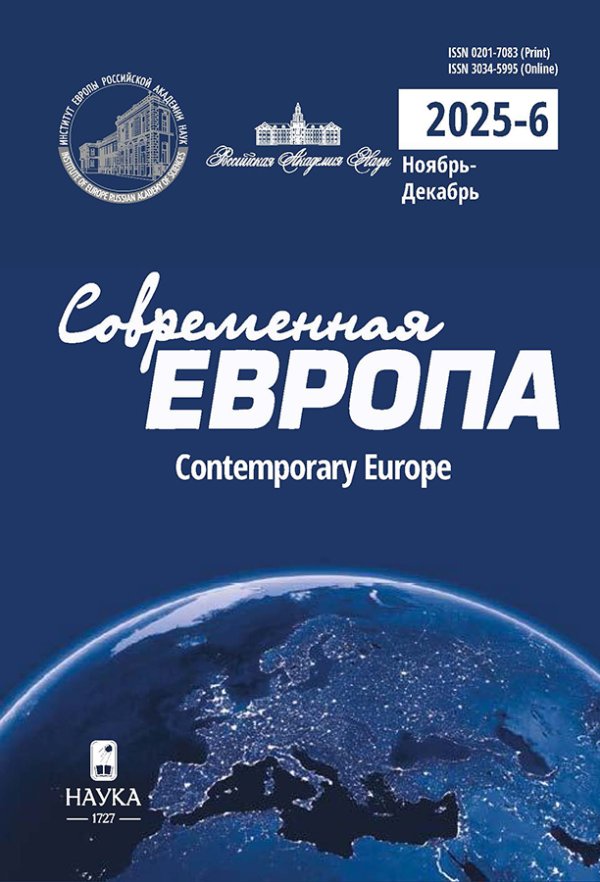Political mediageography: consumption of feminism in Northern Europe
- Authors: Yanglyaeva M.M.1
-
Affiliations:
- Lomonosov Moscow State University
- Issue: No 3 (117) (2023)
- Pages: 131-142
- Section: Articles
- URL: https://journals.rcsi.science/0201-7083/article/view/144490
- DOI: https://doi.org/10.31857/S0201708323030117
- EDN: https://elibrary.ru/BSXZBQ
- ID: 144490
Cite item
Full Text
Abstract
About the authors
Marina Mikhaylovna Yanglyaeva
Lomonosov Moscow State University
Email: marinapavlikova@mail.ru
Moscow, Russia
References
- Воронова Л., Артюхова К. (2008) Путь в политику: особенности становления гендерного равенства в Швеции и России. Образ женщины в культуре и массмедиа. Взгляд из Северной Европы и России. Под ред. Е.Л. Вартанова, М.М. Павликова, О.Л. Кряжева. University of Tampere, Тампере, Финляндия.
- Замятин Д.Н. (2010) Гуманитарная география: предмет изучения и основные направления развития. Общественные науки и современность. № 4. С. 126-138.
- Королева Т.А. (2007) Феминизм: идейно-теоретические основы и политическая практика. Дис.. канд. полит. наук. Санкт-Петербург. 164 с.
- Кукушкина Е.И. (2015) Русская интеллигенция в поисках политических смыслов. Изд. МГУ, Москва. 192 с.
- Малинова О.Ю. (2013) Конструирование смыслов: Исследование символической политики в современной России. РАН. ИНИОН. Центр социальных науч.-информ. исслед. Отд. полит. науки, Москва, Россия. 421 с.
- Николайчук И.А. (2015) Политическая медиаметрия. Зарубежные СМИ и безопасность России. РИСИ, Москва. 230 с.
- Николайчук И.А. Янгляева М.М., Якова Т.С. (2020) Феномен постправды и кризис доверия к легитимным источникам информации. Проблемы национальной стратегии. № 2(59). С. 142-158.
- Павленко Н. Р. (2019) Феминизм в общественно-политической жизни Финляндии: история появления и развития. Скиф. Вопросы студенческой науки. № 7(35). С. 238-242.
- Плевако Н. (2018) Национализм и правый популизм в Скандинавских странах и Финляндии. Научно-аналитический вестник ИЕ РАН. № 3. С. 63-69.
- Степанова Н.М. (2003) Политика гендерного равенства в скандинавских странах. Гендерная реконструкция политических систем. Под ред. Н.М. Степанова, М.М. Кириченко, Е.В. Кочкина. ИСПГ-Алетея, Санкт-Петербург. URL: http://www.owl.ru/win/books/genderpolicy/stepanova2.htm
- Шиманская О.К. (2022) Мария 2.0. феминистское движение в католической церкви Германии: новый вызов? Современная Европа. № 3. С. 171-184.
- Якова Т.С., Янгляева М.М. (2019) Медиагеография. Издательство ИКАР, Москва. 188 с.
- Blotevogel H.H. (1984) Zeitungsregionen in der Bundesrepublik Deutschland. Erdkunde, Band. 38. P. 79-93.
- Darmofal D. (2015) Spatial Analysis for the Social Sciences. Cambridge University Press. 259 p. DOI: https://doi.org/10.1017/CBO9781139051293
- Falkheimer J., Jansson A. (ed.) (2006) Geographies of Communication: The Spatial Turn in Media Studies. Nordicom, Goeteborg, Sweden. 309 p.
- Hägerstrand T. (1965) Aspects of the spatial structure of social communication and the diffusion of the information. Papers of the Regional Science Association. No. 16. P. 27-42.
- Relph E. (1976) Place and Placelessness. Pion, London, UK. 174 p.
- Salovaara-Moring I. Media geographies. Regional newspaper discourses in Finland in the 1990s. Doctoral dissertation. Saarijarvi, Finland. 319 p.
- Walmsley D.J. (1982) Mass media and spatial awareness. Tijdschrift voor Econ. En Soc. Geografie. No. 73(1). P. 32-42.
Supplementary files










